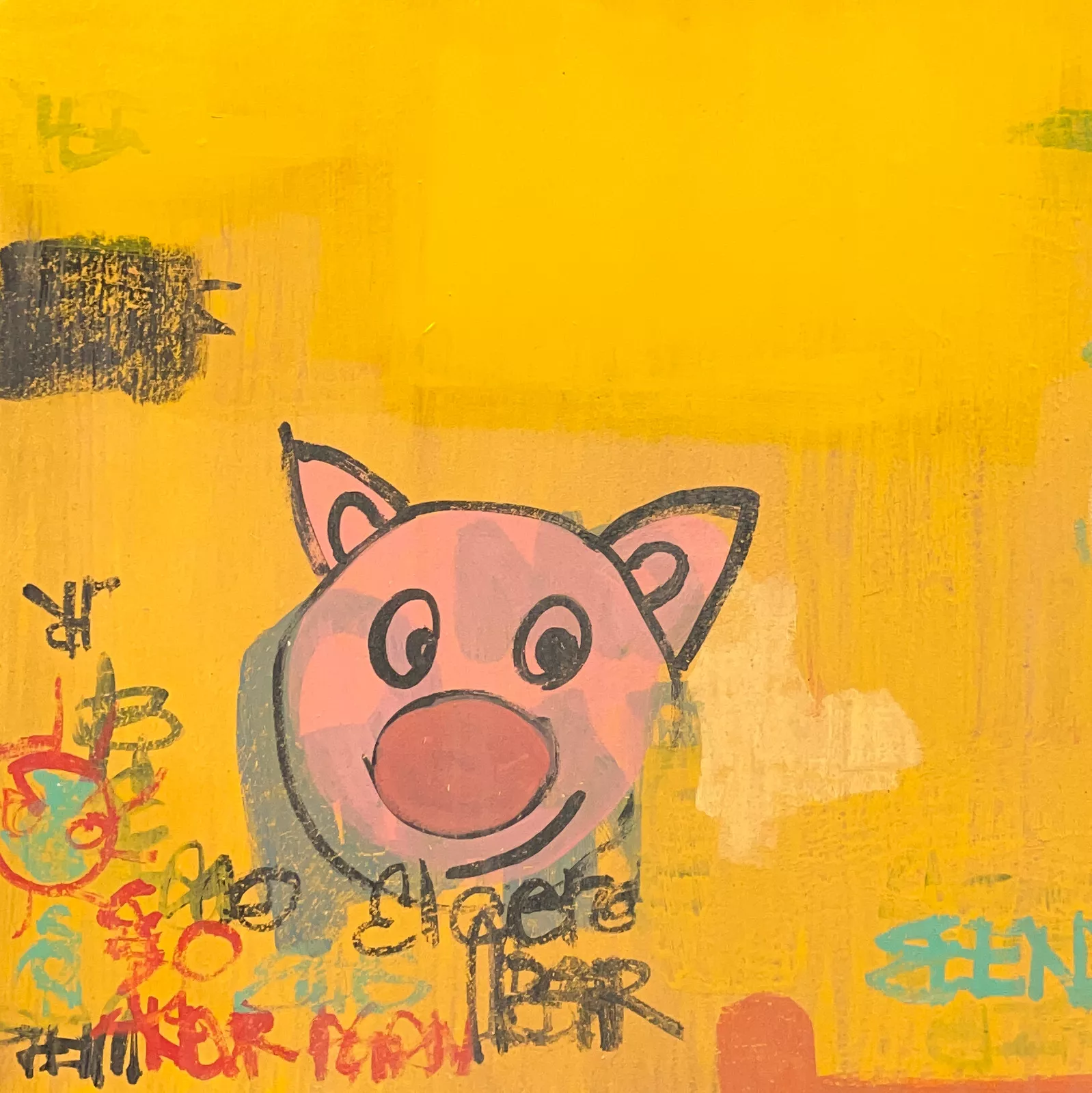In recent weeks, the art world has found itself gripped by two high-profile cases that underscore both the fragility of artistic treasures and the darker side of art investment. The theft of Banksy’s “Girl With Balloon” from a London gallery—and its subsequent recovery—captivated global headlines, while the art collection of Lisa Schiff, an infamous Ponzi scheme operator, is being sold off in the wake of her financial collapse. Together, these stories offer a window into the intersection of art, crime, and commerce, reminding us of the volatility, vulnerability, and high stakes involved in the art world.
This report will critically explore both cases, focusing on the cultural, economic, and ethical ramifications. By examining the theft and recovery of one of Banksy’s most iconic works, we can reflect on the enduring value of art in public consciousness and the ways in which theft disrupts the relationship between society and its cultural artifacts. In contrast, Lisa Schiff’s fraudulent art dealings expose the underbelly of art investment, where shady dealings and inflated valuations reveal the potential for manipulation in the global art market.
Banksy’s “Girl With Balloon”: A Cultural Icon Targeted
Banksy is not just an artist—he is a cultural phenomenon. Known for his thought-provoking street art that often critiques social issues such as capitalism, surveillance, and war, Banksy’s pieces transcend the boundaries of traditional art. His work, at once elusive and impactful, sparks political debates while maintaining widespread popularity in both highbrow and popular culture. His “Girl With Balloon”, one of his most recognized images, epitomizes this duality. Originally appearing as a piece of street art in London in 2002, the work has been reproduced countless times, symbolizing both fleeting hope and the impermanence of art.
The theft of “Girl With Balloon” from a London gallery earlier this week generated immense media attention, both for the sheer audacity of the crime and the fame of the piece itself. For art lovers, the theft felt personal. As a public artist whose work is meant to be accessible and contemplative, Banksy’s pieces are typically not created for private ownership, making the theft even more egregious. Fortunately, the artwork was swiftly recovered, and two men have been charged with non-residential burglary.
While the details of the recovery are still unfolding, this incident raises significant questions about the security of artwork, particularly in public spaces or galleries where art is meant to be enjoyed by all. There’s also an irony to consider in this theft. Banksy himself has long critiqued the commercialization and commodification of art. His work often plays with ideas of ownership and value in ways that deliberately subvert traditional notions of art collecting. His infamous 2018 stunt at Sotheby’s, where another version of “Girl With Balloon” self-destructed via hidden shredders just after it sold for £1.04 million, was a pointed commentary on the absurdity of the art market. To have his work stolen—presumably with the intent to profit from its black-market value—feels like a dark extension of Banksy’s own critique.
The fact that “Girl With Balloon” was returned relatively quickly raises interesting questions about the market for stolen art. While art theft has historically been seen as a lucrative crime, the reality is often much more complicated. High-profile pieces like Banksy’s are difficult to sell or even display, given their instantly recognizable nature. In cases like this, where the work is too famous to be openly traded, the stolen artwork becomes something of a liability rather than a prized possession. The criminals’ inability to capitalize on their theft may explain the quick recovery of the piece, as the intense media scrutiny likely made it impossible for the thieves to profit.
On a broader scale, this incident reinforces the importance of art as a public good. Art theft robs not only galleries or collectors but society at large. When a work of art is stolen, the public is denied the opportunity to engage with it, contemplate its message, and derive meaning from its presence. This is particularly relevant in the case of Banksy, whose work, often situated in public spaces, is meant to provoke thought in passersby, creating a form of dialogue between the artist and the viewer. The recovery of “Girl With Balloon” restores that conversation, allowing the public to once again reflect on its themes of loss, hope, and the fleeting nature of beauty.
Lisa Schiff and the Dark Side of Art Investment
While the theft of Banksy’s work underscores the vulnerability of art in a physical sense, the unraveling of Lisa Schiff’s Ponzi scheme brings to light another form of theft—one that occurs within the financial structures of the art world itself. Schiff, a prominent figure in art investment circles, built her reputation as a savvy art advisor, offering guidance to wealthy collectors and investors on how to navigate the volatile market. However, beneath the surface, she was engaging in fraudulent activities that would eventually bring her empire crashing down.
The art market, with its opacity, speculative nature, and frequent lack of regulation, has long been fertile ground for financial misconduct. Schiff’s Ponzi scheme, which preyed on investors by promising substantial returns on artworks that were either non-existent or grossly overvalued, reveals how susceptible the art world is to manipulation. Her fraud is a reminder that art, for all its beauty and cultural significance, is also a commodity—one that can be exploited for financial gain.
What makes this scandal particularly troubling is the way in which Schiff weaponized the allure of art as an investment tool. Art has historically been a means of preserving and transferring wealth, particularly among the ultra-rich, and its increasing financialization has led to a surge in art advisory services. Advisors like Schiff act as gatekeepers to a world that promises cultural cachet and financial returns, making them highly influential in the decisions of collectors and investors. Schiff’s case highlights the perils of placing too much trust in individuals who operate within a largely unregulated space, where the value of art can be manipulated with relative ease.
The sale of Schiff’s art collection, which was once a symbol of her status in the art world, now represents the fallout of her fraudulent activities. For many, the forced liquidation of her assets serves as a cautionary tale about the risks of art investment. When the value of art is driven not by its cultural significance but by speculation and deceit, the entire system becomes vulnerable to collapse. Schiff’s case is reminiscent of other Ponzi schemes that have targeted the art world, exposing the deep ties between money, prestige, and power within this sphere.
The Schiff scandal also forces us to confront the commodification of art in a different light. Whereas Banksy’s stolen artwork highlights the physical and emotional loss of art, Schiff’s fraudulent dealings expose the ways in which art can be stripped of its cultural value and reduced to a mere financial instrument. In her scheme, art was not something to be cherished or appreciated for its aesthetic or intellectual qualities but rather a means to an end—a way to manipulate investors and enrich herself at their expense.
In the aftermath of Schiff’s downfall, many in the art world are calling for increased transparency and regulation. The market’s current opacity allows for inflated prices, secret deals, and insider trading, all of which can distort the true value of art. While the art world has traditionally prized its independence from regulatory oversight, the Schiff scandal may signal a turning point, where greater scrutiny is needed to prevent future frauds. Collectors and investors, for their part, may become more cautious, seeking out independent appraisals and conducting more rigorous due diligence before making purchases.
A Reflection on Art and its Vulnerabilities
The parallel stories of Banksy’s “Girl With Balloon” and Lisa Schiff’s Ponzi scheme converge on a central theme: the vulnerability of art, both as a physical object and as a financial asset. While the motives behind these two cases differ—one involving criminal intent to steal a cultural artifact, the other exploiting art’s monetary value for personal gain—they both point to the complex and often precarious nature of the art world.
Banksy’s work, with its message of fleeting beauty and the tenuous nature of human hope, takes on added meaning in the context of its theft and recovery. Art can be easily lost, whether to criminals or to the forces of commodification that seek to strip it of its deeper significance. Yet, the public’s outcry over the theft and the relief at its return suggest that art’s value transcends the monetary. The cultural resonance of “Girl With Balloon” lies not in its market price but in its ability to evoke emotion and reflection.
On the other hand, Schiff’s case reveals the darker side of art’s commodification. In a world where art is increasingly seen as an investment vehicle, its value becomes untethered from its cultural importance. The Schiff scandal is a reminder that art, when reduced to a speculative asset, can be easily manipulated and exploited.
As these two stories unfold, they serve as a potent reminder of art’s dual nature. It is both fragile and enduring, a symbol of human creativity that can be easily stolen or commodified but also something that speaks to deeper truths about our shared humanity. Whether hanging in a gallery or being traded in secretive deals, art remains at the center of an ongoing struggle between those who seek to preserve its cultural integrity and those who would exploit it for personal gain.
In the end, these events underscore the importance of vigilance—whether in protecting art from physical theft or safeguarding the integrity of the art market itself. Banksy’s work, returned to its rightful place, reminds us of the power of art to inspire, while Schiff’s downfall serves as a cautionary tale of what happens when art is reduced to a mere commodity. Both stories reflect the high stakes involved in the world of art, where beauty, power, and money often intersect in unpredictable and sometimes troubling ways.
No comments yet.








